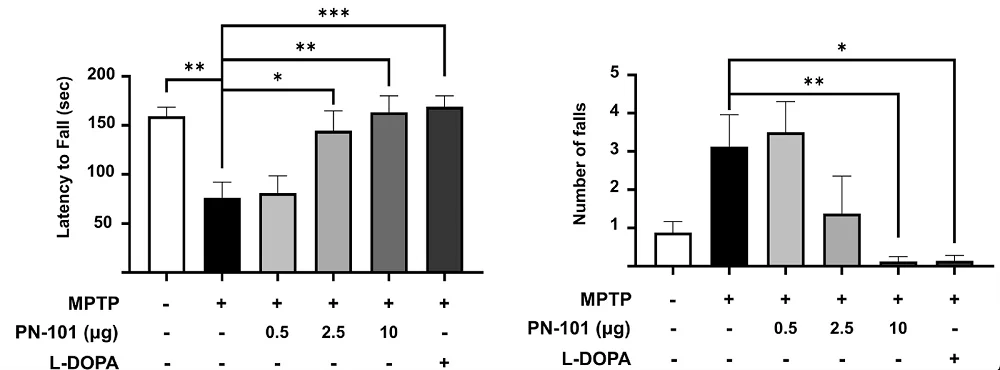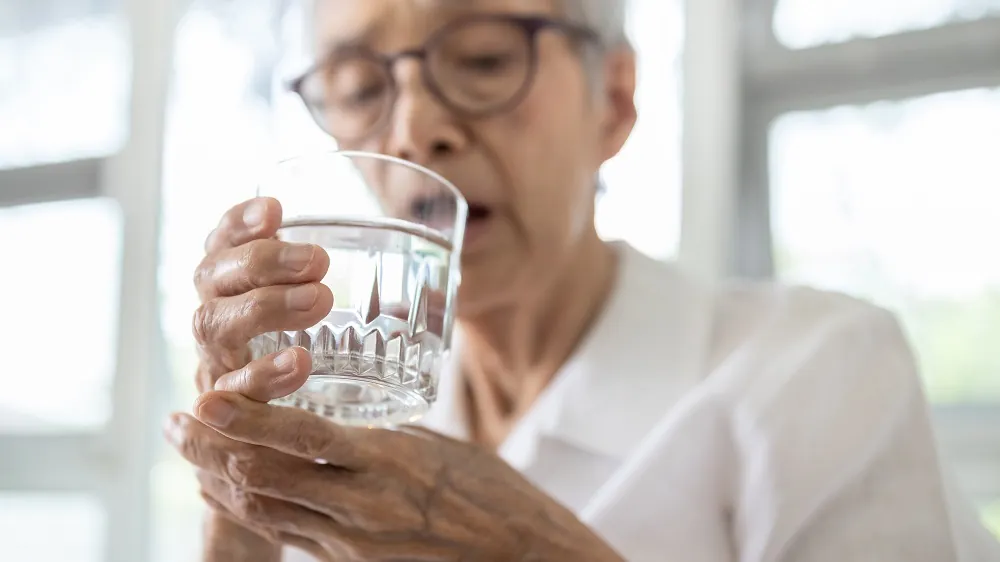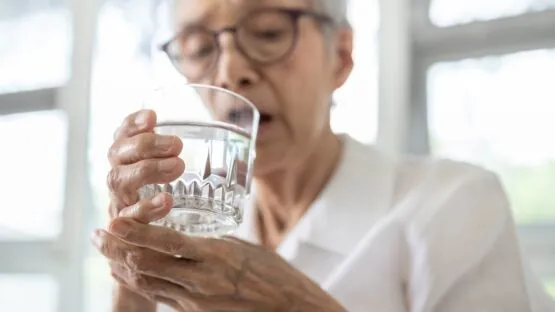Scientists have tested a novel method of providing cells with healthy mitochondria to fight Parkinson’s disease [1].
Replacing damaged mitochondria
Parkinson’s disease is the second-most prevalent neurodegenerative disorder, and it affects 10 million people worldwide. The disease is age-related, as its prevalence rises rapidly in people older than 65, although some people are diagnosed much earlier. Parkinson’s disease is characterized by both motor and mental problems: tremor, rigidity (stiffness), and slowness of movement along with memory and thinking deficits.
Parkinson’s disease is caused by the loss of dopamine-producing (dopaminergic) neurons in a brain region called the substantia nigra. Therapeutic options are limited, and some of the existing ones cause nasty side effects.
Since Parkinson’s disease involves the dying of cells, it’s unsurprising that one of its hallmarks is mitochondrial dysfunction. It has been observed in Parkinson’s disease models in which neuronal damage is generated by toxins or genetics [2].
While some therapeutics exist that target damaged mitochondria, another approach has recently arisen: “transplanting” healthy mitochondria into the affected cells. Scientists have demonstrated that if you isolate mitochondria from various types of cells and inject them into the body, they will preferentially travel to cells and tissues with damaged mitochondria [3].
One candidate drug, PN-101, which is based on mitochondria from human umbilical cord mesenchymal stem cells (UC-MSCs), is already in advanced clinical trials for a number of indications. In this new study, the researchers investigated its therapeutic potential against Parkinson’s disease.
Healthy mitochondria for healthy neurons
First, the researchers co-incubated mitochondria from UC-MSCs with dopaminergic neuron-like cells derived from a line of precursors. It is known that cells can uptake extracellular mitochondria, and sure enough, the researchers detected the transfer of fluorescence-labeled mitochondria into the cells.
Next, the researchers tried the same trick on cells treated by various neurotoxins. The damaged cells, which resembled PD-affected neurons, showed morphological abnormalities, such as neurite degeneration. Treating them with PN-101 significantly improved the cells’ viability.
Neuroinflammation is a hallmark of Parkinson’s disease and other neurodegenerative disorders. Activated microglia, the resident immune cells of the brain, secrete various pro-inflammatory molecules, driving the disease. The researchers tested their mitochondria cocktail on a line of murine microglia treated with lipopolysaccharide, a bacteria-associated molecule that triggers inflammation. PN-101 robustly reduced the mRNA expression and/or secretion of several inflammatory markers such as IL-6 and TNF-alpha.
Bringing down motor deficits and inflammation
When the researchers administered fluorescence-labeled mitochondria to mice intravenously, they found that the mitochondria were taken up mostly by astrocytes, the main type of “maintenance” cells in the brain, rather than by dopaminergic neurons or microglia. This was surprising and at odds with the in vitro results. Despite that, PN-101 was successful in alleviating motor deficits in mice, on par with the positive control, L-DOPA (levodopa), which can cause side effects such as involuntary movements [4].

However, PN-101 was better than L-DOPA in reversing neuronal loss in a mouse toxin-induced model of Parkinson’s disease. It also alleviated microglia activation to the level of healthy controls.
Injections of mitochondria is an exciting approach that can be used far beyond Parkinson’s disease. Mitochondrial dysfunction is one of the central hallmarks of aging and affects numerous organs and tissues, probably exacerbating many other hallmarks. Replacing defective organelles might be a game changer in longevity therapies.
In this study, we demonstrated that mitochondrial transplantation ameliorated dopaminergic cell damage and neuroinflammation in vitro and in vivo. We demonstrated that exogenous fluorescence-labeled mitochondria were successfully transferred into dopaminergic neurons in vitro and astrocytes in vivo. Moreover, the results showed that isolated PN-101 mitochondria were successfully transferred into dopaminergic cells and reversed neurotoxins-induced cytotoxicity. In addition, PN-101 reduced mRNA expression and secretion of pro-inflammatory cytokines in microglial cells. Furthermore, intravenous PN-101 administration improved MPTP-induced motor declines observed in the mice model. Lastly, PN-101 treatment ameliorated dopaminergic neuronal loss and suppressed microglial activation in the brain. These results suggest that PN-101 can be a potential therapeutic treatment against PD by mediating both the neuroprotective and anti-inflammatory effects.
Literature
[1] Eo, H., Yu, S. H., Choi, Y., Kim, Y., Kang, Y. C., Lee, H., Kim, J. H., Han, K., Lee, H. K., Chang, M. Y., Oh, M. S., & Kim, C. H. (2024). Mitochondrial transplantation exhibits neuroprotective effects and improves behavioral deficits in an animal model of Parkinson’s disease. Neurotherapeutics: the journal of the American Society for Experimental NeuroTherapeutics, e00355.
[2] Bose, A., & Beal, M. F. (2016). Mitochondrial dysfunction in Parkinson’s disease. Journal of neurochemistry, 139, 216-231.
[3] Lee, S. E., Kang, Y. C., Kim, Y., Kim, S., Yu, S. H., Park, J. H., … & Kim, C. H. (2022). Preferred migration of mitochondria toward cells and tissues with mitochondrial damage. International Journal of Molecular Sciences, 23(24), 15734.
[4] Alberico, S. L., Kim, Y. C., Lence, T., & Narayanan, N. S. (2017). Axial levodopa-induced dyskinesias and neuronal activity in the dorsal striatum. Neuroscience, 343, 240-249.




